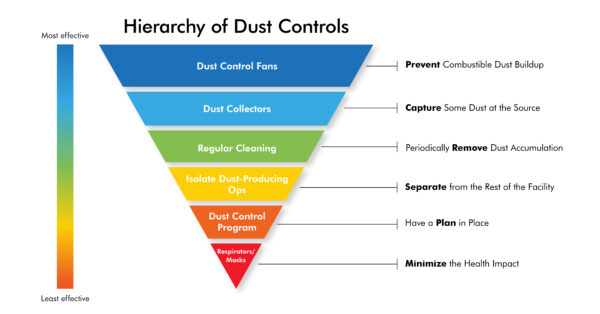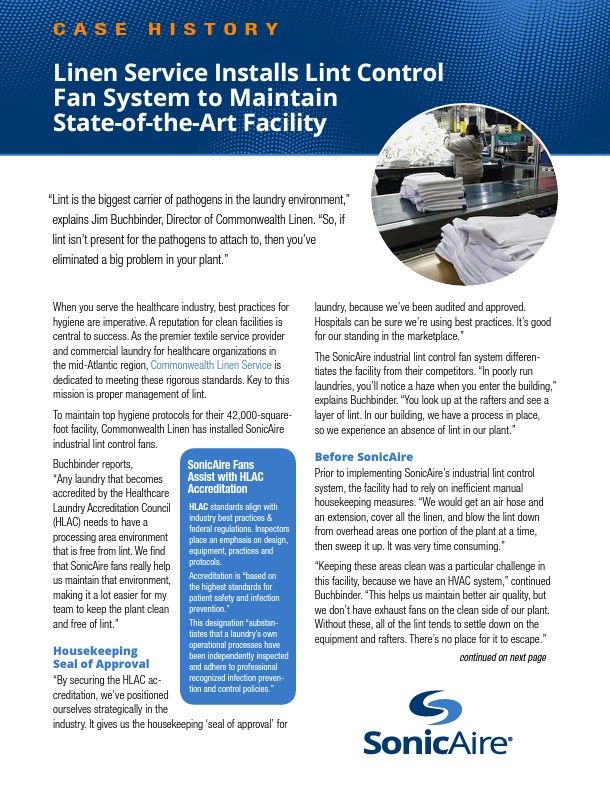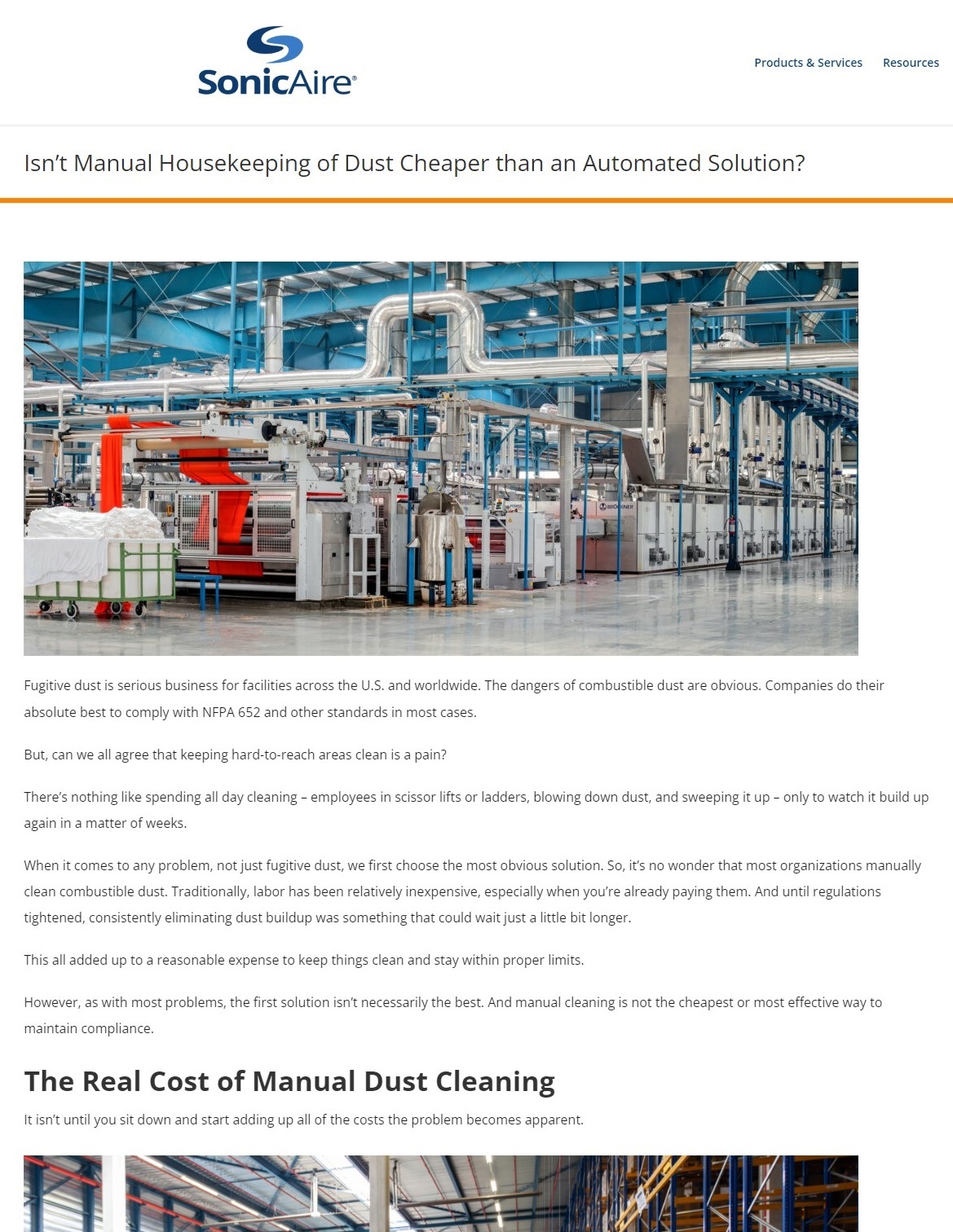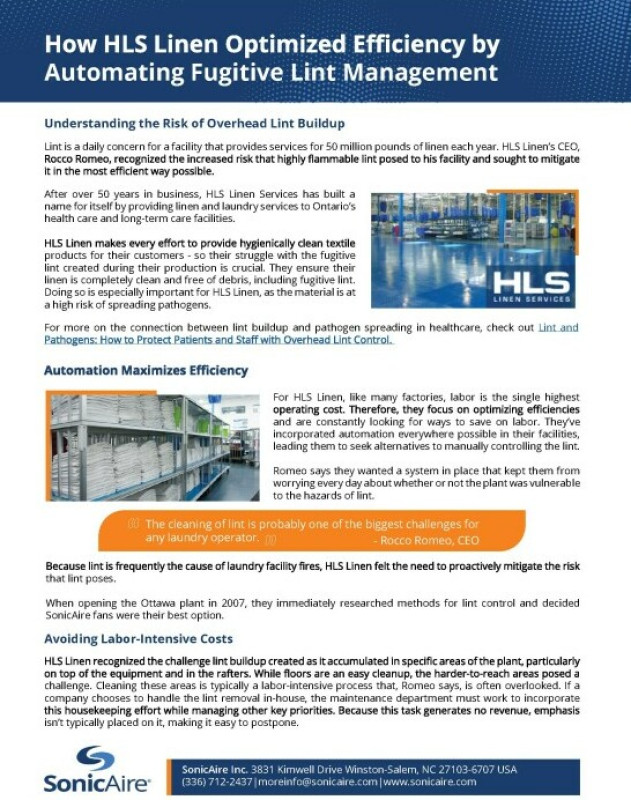The Hazards of Lint and Dust in the Textile Industry
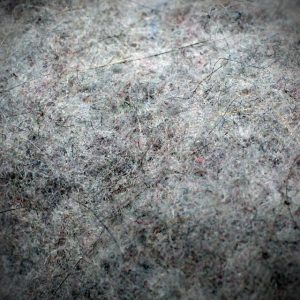
What’s inevitable in every textile facility? Lint. These small particles don’t dissipate heat well and offer a high-ratio surface area. The result? Lint particles, and even worse, lint build up. These pose an incredibly high risk of a disastrous fire in textile facilities.
You’ll see plenty on our site about fugitive dust, but don’t let the word “dust” lead you away from “lint.” When the industry is paper, wood, or even grain, one will likely expect a certain amount of dust management to be necessary, but lint can be just as difficult to manage as dust. – And nearly as dangerous.
You may have seen the “Fire-Building Hack” for creating your own fire starter using dryer lint, and when you consider this, it’s easy to see why you’ll need to put so much stress on eliminating that build up.
Automating Lint Control in a Textile Facility
Recognizing that proper automation can prevent labor costs HLS Linen strives to automate what it can. Finding a way to automate their fugitive lint and combustible dust management has been no exception. Manually cleaning lint build-up is a labor-intensive process, and when HLS researched methods and systems to make it less so, they found SonicAire.
Since installing SonicAire fans, the HLS Linen plants in Ottawa and Toronto have maintained compliance and safety on fugitive lint – and have done so in a way that allows them to save on time and labor costs.
Traditional Lint and Dust Control in the Textile and Nonwoven Industries
Fortunately for production in the textile industry as a whole, smart technology and eco-friendly trends are creating sustainable solutions that conserve more water and energy. That means a facility’s capacity to operate is limited less by the machines’ operation costs and more by the space they have to safely fill their facility with those high-efficiency machines. Of course, the increase in equipment doesn’t have to mean an increase in the workforce. This fact can save companies tremendously, but it also means there are fewer people to monitor more machines and rafters for lint build up. And if it isn’t being thoroughly monitored, the housekeeping required to manage it is even less likely.
Has your business been doing more with less? Check out 6 Ways to Manage Combustible Dust in a Labor Shortage.
The ducts of each machine, particularly large industrial machines, must be maintained to prevent fire. When a build up of lint blocks the airflow, the machines and ventilation systems reach incredibly high internal temperatures, and that lint acts as fuel.
Outside of the machines and vents, though, there are still plenty of risks associated with lint. It may not all be combustible, but given an ignition source, it will rapidly spread the fire.
So do you know your options?
Automating Lint Control in a Textile Facility
Recognizing that proper automation can prevent labor costs HLS Linen strives to automate what it can. Finding a way to automate their fugitive lint and combustible dust management has been no exception. Manually cleaning lint build-up is a labor-intensive process, and when HLS researched methods and systems to make it less so, they found SonicAire.
Since installing SonicAire fans, the HLS Linen plants in Ottawa and Toronto have maintained compliance and safety on fugitive lint – and have done so in a way that allows them to save on time and labor costs.
Traditional Lint and Dust Control in the Textile and Nonwoven Industries
Fortunately for production in the textile industry as a whole, smart technology and eco-friendly trends are creating sustainable solutions that conserve more water and energy. That means a facility’s capacity to operate is limited less by the machines’ operation costs and more by the space they have to safely fill their facility with those high-efficiency machines. Of course, the increase in equipment doesn’t have to mean an increase in the workforce. This fact can save companies tremendously, but it also means there are fewer people to monitor more machines and rafters for lint build up. And if it isn’t being thoroughly monitored, the housekeeping required to manage it is even less likely.
Has your business been doing more with less? Check out 6 Ways to Manage Combustible Dust in a Labor Shortage.
The ducts of each machine, particularly large industrial machines, must be maintained to prevent fire. When a build up of lint blocks the airflow, the machines and ventilation systems reach incredibly high internal temperatures, and that lint acts as fuel.
Outside of the machines and vents, though, there are still plenty of risks associated with lint. It may not all be combustible, but given an ignition source, it will rapidly spread the fire.
So do you know your options?
The Hierarchy of Dust Control – How to Keep Your Facility Safe
At SonicAire, we know how important it is to keep your employees safe from lint and dust hazards in a textile facility. Let’s take a look at the most popular dust control methods and rank their effectiveness.
Masks/Respirators [PPE]
Respirators and masks are great for minimizing the inhalation of floating dust and lint particulates, but they don’t protect your staff from the greatest danger of all – combustible dust explosions.
Dust Control Program [Administrative Controls]
Yellow-painted pathways and signs are examples of administrative controls that can guide people to work in a particular manner. While they can’t eliminate fugitive dust production and buildup, a control program can mitigate the risk of an explosion.
Isolating Dust-Producing Operations [Engineering Controls]
Isolating lint and dust-producing processes from the rest of the facility can protect some employees, but anyone working in the area will still be subject to the harmful effects of dust or a combustible dust incident.
Regular Cleaning [Substitution]
Regular cleaning is highly effective but time-consuming, expensive, and dangerous for employees. Shutting down operations for cleaning is always a hit to the bottom line.
Dust Collectors [Elimination]
Dust collection systems can minimize the fugitive dust and lint that can lead to buildup, but they can’t eliminate it entirely.
Dust Control Fans [Elimination/Prevention]
And finally, we have our favorite – Dust control fans! These fans prevent dust buildup in overhead spaces by creating a barrier that prevents dust from getting up to hard-to-reach areas. Fugitive dust settles to the floor, where it can be easily swept up and eliminated from the facility. It’s the most effective and efficient way to protect your facility from dust hazards.
What is a Dust Hazard Analysis?
With years of experience in testing and consulting on combustible dust hazards and nearly a century of operations focusing on safety, DEKRA is an excellent all-around resource for your specialized demands.
Click the video below to watch this conversation and discover the best next steps once you’ve completed your DHA.
How Do SonicAire Fans Prevent Dust Buildup?
SonicAire’s proprietary technology combines two methods to control dust flow.
High-Velocity Airflow
SonicAire’s specialized fans use high-velocity airflow to clean overhead areas. This ultra-powerful airflow effectively prevents the accumulation of flammable lint on overhead structures and provides better dust and lint control for textile and nonwoven facilities.
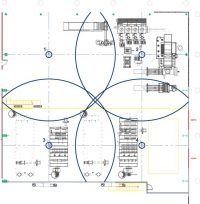
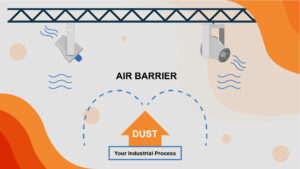
Thermal-Current Control
Typical airflow involves warm air currents naturally rising and lifting dust and lint to overhead structures, where it accumulates quickly. SonicAire’s industrial dust control fans prevent these naturally occurring upward thermal currents from holding debris in the air in the first place. Our fans create an air barrier below the overhead structures so the lint and dust don’t rise above them and settle on top.
BarrierAire
Using these two unique and efficient approaches, and with the help of our specialists, you can be assured that lint accumulation in your facility will be kept at a safe, minimal level.
Contact us today to speak to one of our trained specialists about how SonicAire can mitigate the danger of dust and lint in your facility. We would love to show you exactly how to make your workspace as safe as possible from dangerous buildup as well as save you time and money from having to do manual clean-up.
Don’t Go Into Your Lint and Dust Management Plan Blind
When your facility needs help remaining safe with lint and dust, finding the cost associated with your options is crucial to making the right choice. Of course, that doesn’t mean just looking at price tags. You’ll also need to evaluate how long it will take before you see a return on your investment on each option.
That’s why SonicAire created the ROI calculator. You can use your facility’s figures to determine an estimated cost in the long run. But SonicAire isn’t just leaving the resource for you to figure out alone; we’ve created this guide to let you see exactly how the ROI calculator works.
Get started with our free calculator now.
What a Facility Needs to Do and What They Should Do
Your facility should conduct a Dust Hazard Analysis (DHA) to see how well it manages dust hazards. Some textile dust can be combustible, but even if that isn’t the case for your facility, textile companies inevitably create lint, posing a significant fire and pathogen hazard.
Lint is not dust, though. Dust accumulation may have lint particles in it, and vice versa, but the two are not the same. You must know whether your facility’s housekeeping prevents fire or a combustion event. (A DHA will give you all the details and more.)
You will also need to ensure you’re taking the proper steps to create a safe and compliant environment in your facility. The DHA can give you some tips and recommendations, but if you want to get ahead of any safety requirements, SonicAire can help.
Additional Resources
Learn more about how we helped companies like yours find solutions to their dust problems.
Complimentary Dust Management Plan with ROI Analysis
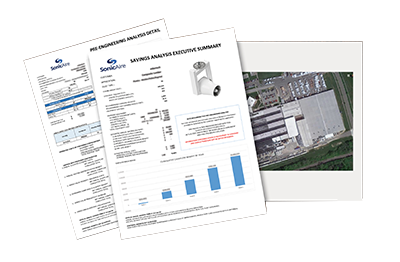
Our analysis will also show you the expected Return on Investment, including equipment investment, estimated annual savings and cumulative cashflow benefit.
Get started by contacting us today for your custom facility review, ROI analysis and fan technology proposal.
Get Your Complimentary Dust Management Plan with ROI Analysis

Our analysis will also show you the expected Return on Investment, including equipment investment, estimated annual savings and cumulative cashflow benefit.
Get started by contacting us today for your custom facility review, ROI analysis and fan technology proposal.

